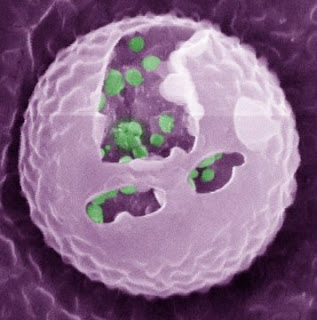DEVELOPMENT OF DESIRED ARTIFICIAL SYNTHETIC BETA CELLS TO CONTROL DIABETES
Prof Dr,DRAM,HIV /AIDS,HEPATITIS ,SEX DISEASES & WEAKNESS expert,New Delhi,India, +917838059592
Artificial Synthetic Beta Cells have been developed that automatically release insulin into the bloodstream when glucose levels rise. This work was done in lab experiments but could lead to a much more patient-friendly treatment than injections.Treating type 1 diabetes and some cases of type 2 diabetes has long required painful and frequent insulin injections or a mechanical insulin pump for insulin infusion. But researchers from the University of North Carolina and NC State have now developed what could be a much more patient-friendly option: artificial cells that automatically release insulin into the bloodstream when glucose levels rise.
These "artificial beta cells" (AβCs) mimic the functions of the body's natural glucose-controllers, the insulin-secreting beta cells of the pancreas. The loss or dysfunction of these cells causes type 1 diabetes and many cases of type 2 diabetes. The idea is that the AβCs could be subcutaneously inserted into patients, which would be replaced every few days, or by a painless and disposable skin patch.As the researchers report in Nature Chemical Biology, a single injection of the AβCs into diabetic mice lacking beta cells quickly normalized the animals' blood glucose levels and kept those levels normal for up to five days."Our plan now is to further optimize and test these synthetic cells in larger animals, develop a skin patch delivery system for them, and ultimately test them in people with diabetes," said principal investigator Zhen Gu..
 At least six million people in the United States use insulin as a diabetes treatment, either by injection or a mechanical pump. So far, delivered insulin in pill form has been challenging because it's a large molecule that would be destroyed by digestive enzymes and acids before it could reach the bloodstream.The major problem with current insulin treatments, however, is not that they can't be delivered in a pill, but that they can't control blood glucose levels automatically and efficiently, as normal insulin-secreting pancreatic cells do. Transplants of pancreatic cells can solve that problem in some cases. However, such cell transplants are expensive, require donor cells that are often in short supply, require immune-suppressing drugs, and often fail due to the destruction of the transplanted cells.
At least six million people in the United States use insulin as a diabetes treatment, either by injection or a mechanical pump. So far, delivered insulin in pill form has been challenging because it's a large molecule that would be destroyed by digestive enzymes and acids before it could reach the bloodstream.The major problem with current insulin treatments, however, is not that they can't be delivered in a pill, but that they can't control blood glucose levels automatically and efficiently, as normal insulin-secreting pancreatic cells do. Transplants of pancreatic cells can solve that problem in some cases. However, such cell transplants are expensive, require donor cells that are often in short supply, require immune-suppressing drugs, and often fail due to the destruction of the transplanted cells.
Gu's AβCs are constructed with a simplified version of a normal cell's two-layered lipid membrane. The key innovation is what these cells contain: specially designed, insulin-stuffed vesicles. A rise in blood glucose levels leads to chemical changes in the vesicle coating, causing the vesicles to start fusing with the AβC's outer membrane -- thus releasing the insulin payloads.This is the research as creative first step to a new way to solve the diabetes problem using chemical engineering as opposed to mechanical pumps or living transplants."
Gu and his team are also working separately on a cell-free skin patch, a "smart insulin patch" that senses blood glucose levels and secretes insulin into the bloodstream as needed.
- Kidney stones universally present hazard in north india,dillution by water prevent it
- Steroid and placebo effect equally for mild persisting asthma with low sputum eosinophils
- Government wants to fix public healthcare staff shortages with ayush docs: will it work?
- Plea in hc for payment of salaries of edmc, north mcd teachers and doctors
- 7 indian pharma companies named in us lawsuit over inflating generic drug prices
- Woman in up dies after explosion in her mouth during treatment,what is diagnosis?
- Woman in up dies after explosion in her mouth during treatment,what is diagnosis?
- Woman in up dies after explosion in her mouth during treatment,what is diagnosis?
- Air pollution ! mothers organising rally in london,anaesthetist choosing gas,will india follow?
- Cardiac arrest is always not sudden as understood -a study

 Comments (
Comments ( Category (
Category ( Views (
Views (